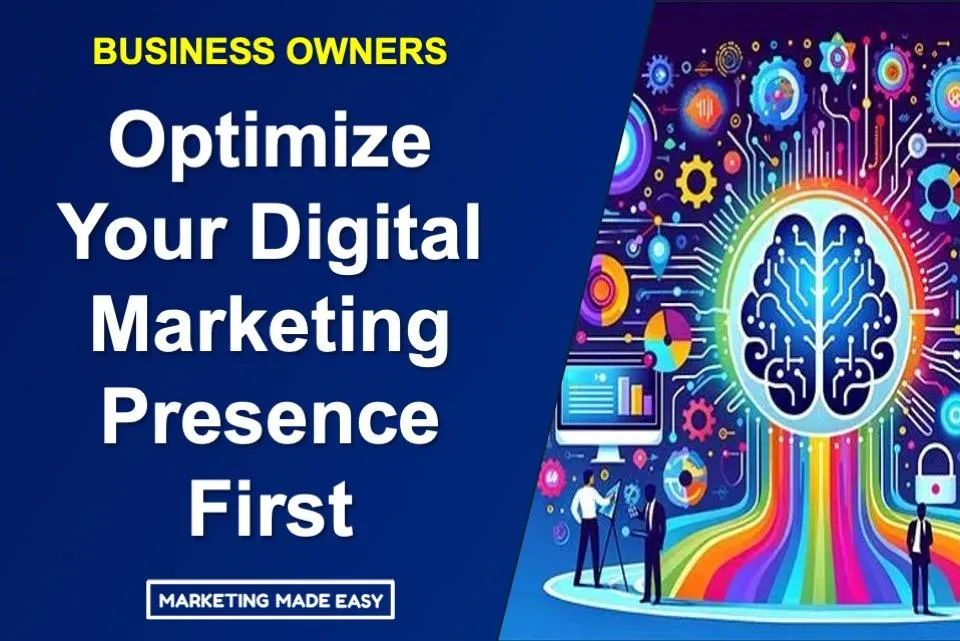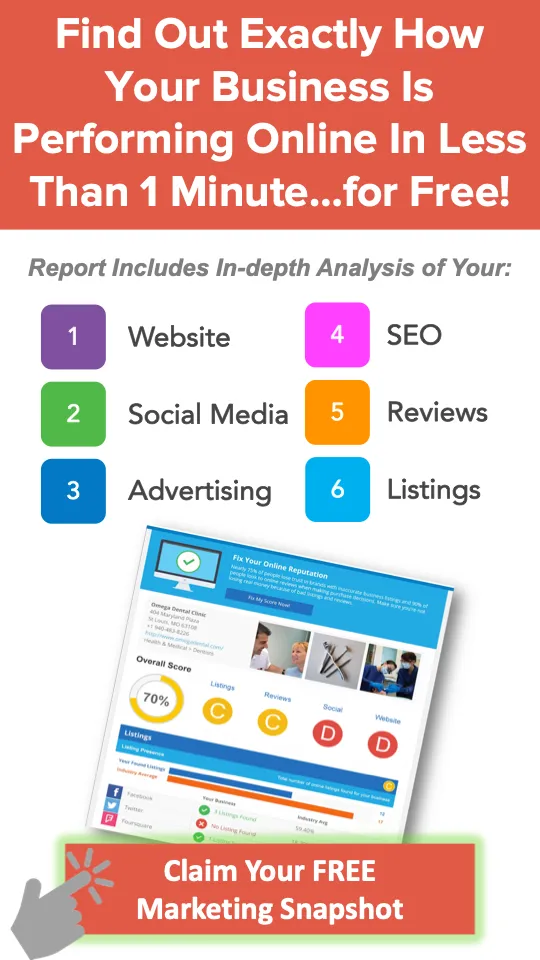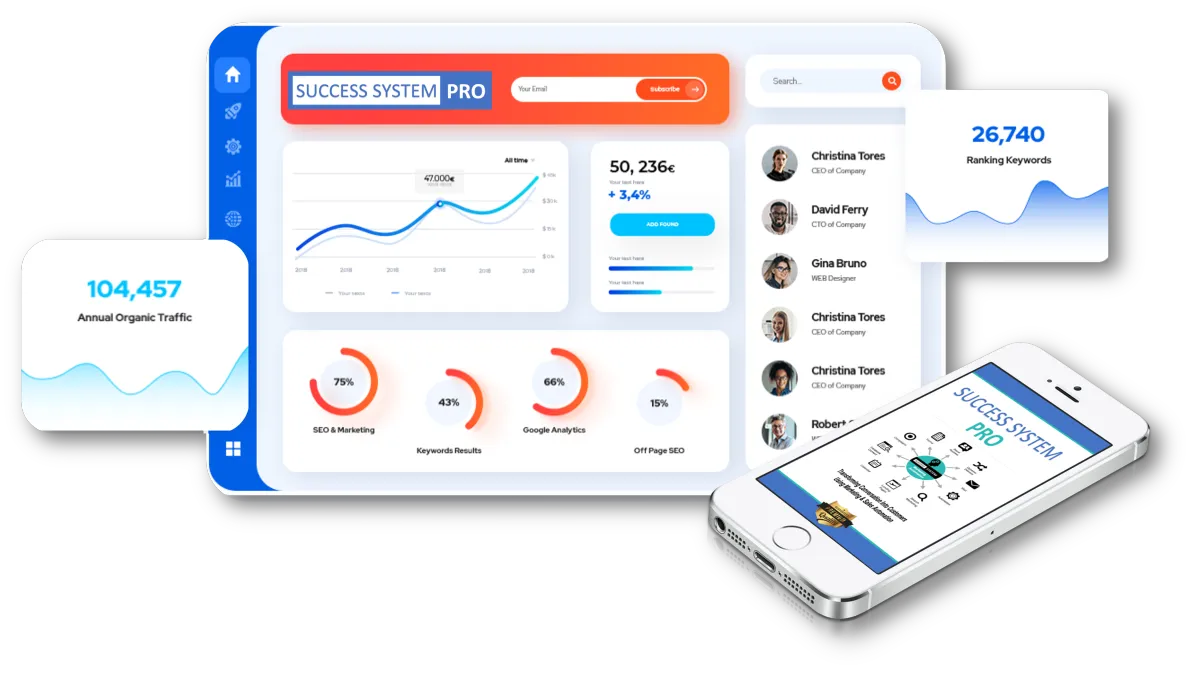
How Businesses Can Optimize Their Digital Presence for Success
In today’s digital age, optimizing your small business’s online presence isn’t just an option—it’s a necessity. The days when word of mouth and a good location could keep your business thriving are long gone. Now, customers turn to the internet for everything from discovering new products and services to checking reviews and making purchases or appointments. So, how can you ensure your small business stands out in a crowded digital landscape?
This article will walk you through the essential strategies for optimizing your digital presence, covering everything from social media pixels to loyalty programs. And while this may seem complicated, don’t worry—we’re here to help.
1. Leverage Facebook Pixel for Better Ad Targeting
The Facebook Pixel is a powerful tool that tracks user interactions on your website. By embedding a small piece of code, you can collect valuable data on how visitors engage with your site. This data allows you to create targeted ads on Facebook, shown to people who have already visited your site, showing interest in your products or services.
For instance, if someone browsed your offerings but didn’t complete a purchase, the Facebook Pixel can help you retarget them with ads promoting a special offer or reminding them to check out. This targeted approach can significantly increase your chances of converting casual visitors into paying customers.
RESOURCE: [Check out this video explaining the Facebook Pixel in detail]
2. Utilize Google Analytics for Insights
Google Analytics is an indispensable tool for understanding how visitors find and interact with your website. By setting up Google Analytics, you can track where your visitors are coming from, what pages they are viewing, and how long they stay on your site. This data helps you identify what’s working and what needs improvement.
For example, if you notice a high bounce rate from a particular product or service page, it could indicate that visitors aren’t finding the information they need, allowing you to optimize the page for better engagement and conversions.
3. Streamline Tracking with Google Tag Manager
Managing multiple tracking codes can be a headache, but Google Tag Manager simplifies the process. This tool allows you to manage all your tracking codes—such as Google Analytics and Facebook Pixel—from one centralized platform. This not only streamlines your website’s backend but also ensures your tracking codes are working properly, giving you accurate data.
With Google Tag Manager, you can also set up tags to track specific actions, like button clicks or form submissions. This gives you more control over how you monitor and measure customer interactions on your site.
4. Optimize Your Google Business Profile
Your Google Business Profile is often the first impression potential customers will have of your business. Optimizing it is crucial for local SEO, helping your business appear in local search results when people look for services or products in your area. Here’s how to optimize your Google Business Profile:
Ensure your business information is accurate: Make sure your name, address, phone number, and hours of operation are correct and up to date.
Add high-quality photos: Showcase your products, workspace, or team to create a more inviting presence.
Encourage reviews: Positive reviews can significantly impact your business’s reputation. Encourage satisfied customers to leave reviews and make sure to respond to them to show you value feedback.
5. Use Websites with Words, Not Just Pictures
While visuals are important, your website needs more than just images to rank well in search engines. A website filled with relevant, engaging content will attract more visitors and keep them on your site longer.
The best way to do this is with a blog. A blog allows you to regularly update your website with fresh content, such as industry tips, behind-the-scenes insights, or information about upcoming promotions. By using keywords that potential customers are searching for, you can improve your search engine rankings and drive more targeted traffic. For example, a blog post titled “Top Tips for Choosing the Right [Your Service] Provider in [Your City]” can attract people specifically looking for your service, increasing traffic to your site.
6. Implement a Digital Loyalty Program
A well-designed digital loyalty program can turn one-time customers into repeat buyers. By offering rewards for repeat purchases or for referring friends, you encourage customers to return. The key to a successful loyalty program is making it simple and valuable—offering discounts, exclusive offers, or freebies as incentives.
Many small businesses use apps or email-based loyalty systems to keep track of points and rewards. Not only does this help retain customers, but it also encourages them to engage with your business more frequently.
By leveraging these digital tools and strategies, you can ensure your small business stands out and thrives in today’s competitive marketplace. Whether you’re just getting started or looking to optimize an existing online presence, small changes can lead to big results.
Explore a better way to grow
(919) 646-3322
(919) 646-3322

The intersection of technology, data, and talent.
Welcome to Success Systems, where we combine artificial and human intelligence to help enterprises capture every opportunity for efficiency, growth, and scale.
Resources
Best FREE Gift Ever
Monthly webinars
Customer Stories
Video Tutorials
All Rights Reserved
© 2025 - Success Systems LLC
This site is not part of the Facebook website or Facebook Inc. Additionally, This site is NOT endorsed by Facebook in anyway. FACEBOOK is a trademark of Facebook, Inc.
DISCLAIMER: If you do nothing, you can expect nothing. Your results will vary and depend on many factors… including but not limited to your background, experience, and work ethic. All business entails risk as well as massive and consistent effort and action. If you’re not willing to accept that, please DO NOT APPLY FOR OUR PROGRAM.
We’re on a mission to build a better future where technology creates good jobs for everyone.








